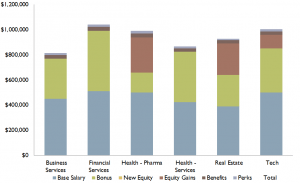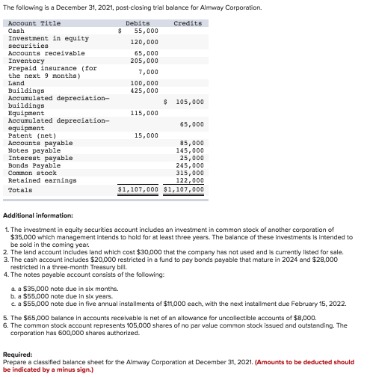
There are several types of backlogs, including product backlogs, sprint backlogs, and feature backlogs. Product backlogs are used to track all tasks related to a product, while sprint backlogs are used to track tasks related to a specific sprint. It can be used to prioritize tasks, track progress, and identify areas of improvement. By having a backlog, organizations can ensure that tasks are completed in the most efficient way possible, and that resources are used in the most effective manner. Trusted by millions of high-performing software teams, Jira makes it easy to organize work, stay aligned, and build better products. Jira streamlines communication between software teams and their cross-functional partners, unlocking better collaboration.
What is a Product Backlog?
Backlog in business, when understood and managed with care, can become an opportunity for improvement rather than a stumbling block. Backlog help organize the work, define tasks, and stay punctual with the delivery. Find out how to create agile boards in Jira with this step-by-step guide. Agile has had a huge impact on me both professionally and personally https://www.personal-accounting.org/ as I’ve learned the best experiences are agile, both in code and in life. You’ll often find me at the intersection of technology, photography, and motorcycling. In many cases, these lender backlogs resulted in situations where delinquent borrowers were able to remain in their homes for several years without making any mortgage payments.
Understanding the Benefits of a Backlog
This continual refinement aids the team in maintaining focus on delivering high-quality products that cater to customer needs. Even the operational aspects of Agile development should focus on the value that will be delivered to the end user. You must align your product backlog with the product vision and tasks should be prioritized accordingly. Every decision should be made in context with the key benefits for the customer, and how the product is differentiated from the competition.
Return on Sales: How to Calculate It and What You Need to Know

With a purpose-built roadmap tool, individual backlog items link with the more prominent themes in the roadmap. The backlog gets itself when stakeholders drill down into the details of each piece. The roadmap provides context for the prioritized backlog items within the larger strategic objectives and timeline of the overall product roadmap. A product backlog is a prioritized list of work for the development team that is derived from the product roadmap and its requirements.
Your Guide to Business Development Planning
- An essential part of the continuous delivery system of product development is the management and implementation of a product backlog.
- Any change or update not reflected in the backlog needs to be communicated to all stakeholders.
- Prioritization plays a vital role in enabling teams to concentrate on high-value items initially, ensuring that critical features or tasks are promptly addressed.
- The backlog typically comprises user stories, bug fixes, enhancements, and other work items that require attention.
The business analyst should conduct periodic reviews of the updated backlog with stakeholders and seek their input regarding any further adjustments required. Incorporating feedback helps in refining priorities and ensuring alignment between business goals and development efforts. Yes, various project management and productivity tools exist to help businesses track and manage their backlogs.

The sprint backlog supports the team’s commitment to delivering a defined set of items within a fixed time frame. The product backlog is a living document that continually evolves as the project progresses. It adapts to changes in market conditions, stakeholder feedback, and emerging priorities. The product backlog is often visible to stakeholders, who may provide input and feedback on its content. It serves as a means of communicating the project’s long-term direction.
Bug fixes are self-explanatory, and your Scrum team should address these quickly to uphold the integrity of the product. Some bugs may be important enough to interrupt your team’s current sprint, while others can wait for the next sprint. An overall rule with bugs, however, is to keep them at the top of your product backlog so your team doesn’t forget about them. A backlog’s utility lies in the accuracy and volume of its contents and how that enables the product team to prioritize future work. It is the master repository of every valid request, idea, and possibility for the product, product extensions, or even entirely new offerings. Quick iterations and deployment of new functionality and enhancements keep the focus squarely on delighting customers.
It can feel like everything is spiraling out of control when you’re focused on your backlog, but there’s no need to worry. Taking the time to look at your backlog and planning how you’re going to tackle it will help remind you that a backlog is simply a temporary setback that you will overcome. Prioritization could also highlight tasks that are no longer priorities and don’t actually need to be completed. This will help speed up the process by letting you only spend time on the tasks that matter.
Those that a team will work on soon should be small in size and contain sufficient detail for the team to start work. The team may establish a definition of ready to indicate their agreement on the information they’d like to have available in order to start working on a product backlog item. Product backlog items that are not slated for work may be fairly broad and have little detail.
And while it’s easy to mistake a product backlog for a task sheet or just a product development ‘to-do’ list, it’s so much more than that. These backlogs are usually handled by a project owner in charge of a single team. For example, an organization may deliver customer implementation projects as part of a larger product backlog. Or a game development company might manage each generation of a game as a project with a fixed delivery date (for example around Thanksgiving). Managing changes to the backlog is a critical aspect of effective backlog management for business analysts. As requirements evolve and priorities shift, it is essential to ensure that the backlog reflects these changes accurately.
However, as Kiplinger reported, bipartisan tax legislation (passed by the U.S. House of Representatives in January but stalled in the U.S. Senate) proposed to end the ERC. Eliminating the tax credit would offset proposed tax cuts for families and businesses in the proposed tax package. Following a review of the credit, the IRS recently announced that the “vast majority” present value and future value of an annuity net present value with formulas and examples of about 1 million ERC claims show the risk of being improper or carrying an “unacceptable” level of risk. The IRS plans to deny many of these claims while protecting legitimate ones. In order to be considered for parole, an individual will need to file a form with USCIS along with supporting documentation to show they meet the requirements and pay a fee.
One key component that gives a backlog meaning is the prioritized items. Therefore, the items ranked highest on the list represent the team’s most important or urgent items to complete. A well-managed backlog sketches out the strategic product plan and eliminates the uncertainty with mapped-out tasks, plans, and goals for the product’s future.
Either way, circumstances require you set aside time to expand the team’s understanding. Product Backlog refinement is the act of breaking down and further defining Product Backlog items into smaller more precise items. Refinement can occur at any time during a Sprint, in a more formal meeting or meetings, on an ongoing basis or as needed.
It is overseen and administered by the Product Owner to ensure transparency and streamline the workflow. Manage your backlog like a pro using Helix Plan (formerly Hansoft), the Agile backlog management tool for productive teams. A project backlog is a prioritized and structured list of deliverables that are a part of the scope of a project. It is often a complete list that breaks down work that needs to be completed.

As the project advances, these items are broken down further and refined in terms of specific tasks, dependencies, and priorities. These refined tasks are what make up the Sprint Backlog for each sprint. As a seasoned entrepreneur who has utilized backlogs to drive multiple business transformations, I can attest to their critical role in managing projects efficiently. One of the primary tasks of a backlog manager is to ensure that the product https://www.business-accounting.net/when-should-a-product-warranty-liability-be-recorded/ backlog stays as an effective tool for teams to plan and execute tasks around. When backlogs get too big or are filled with outdated or incomplete tasks, it can be hard for teams to properly prioritize work and maintain a continuous workflow. Backlog management has proven effective for business analysts by providing a structured approach to prioritizing work, fostering team collaboration, and allowing flexibility in responding to change.